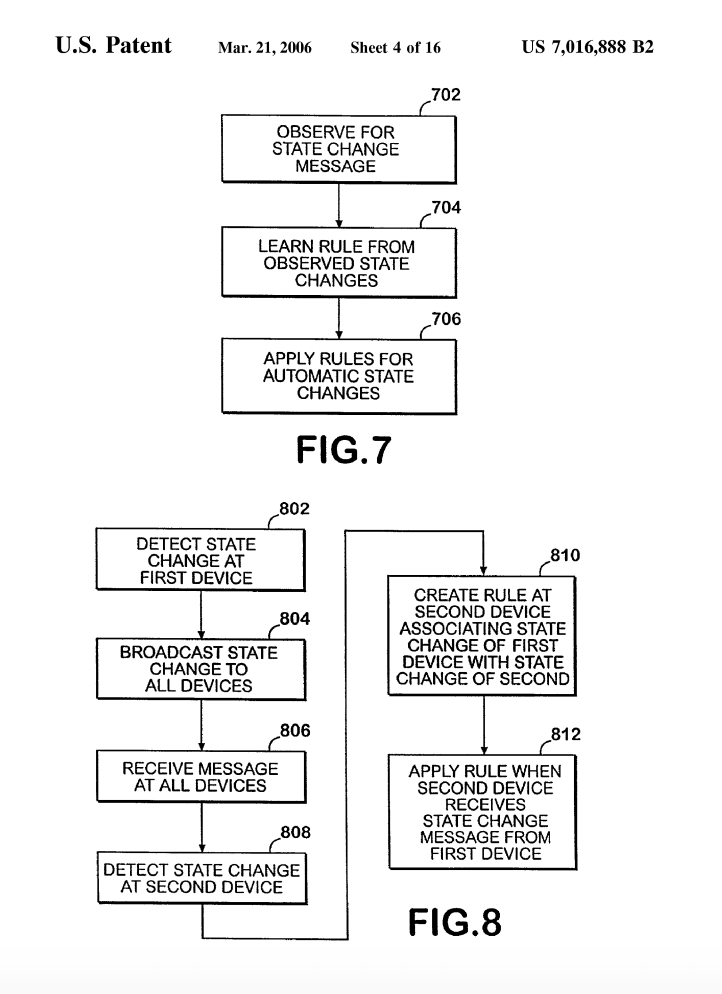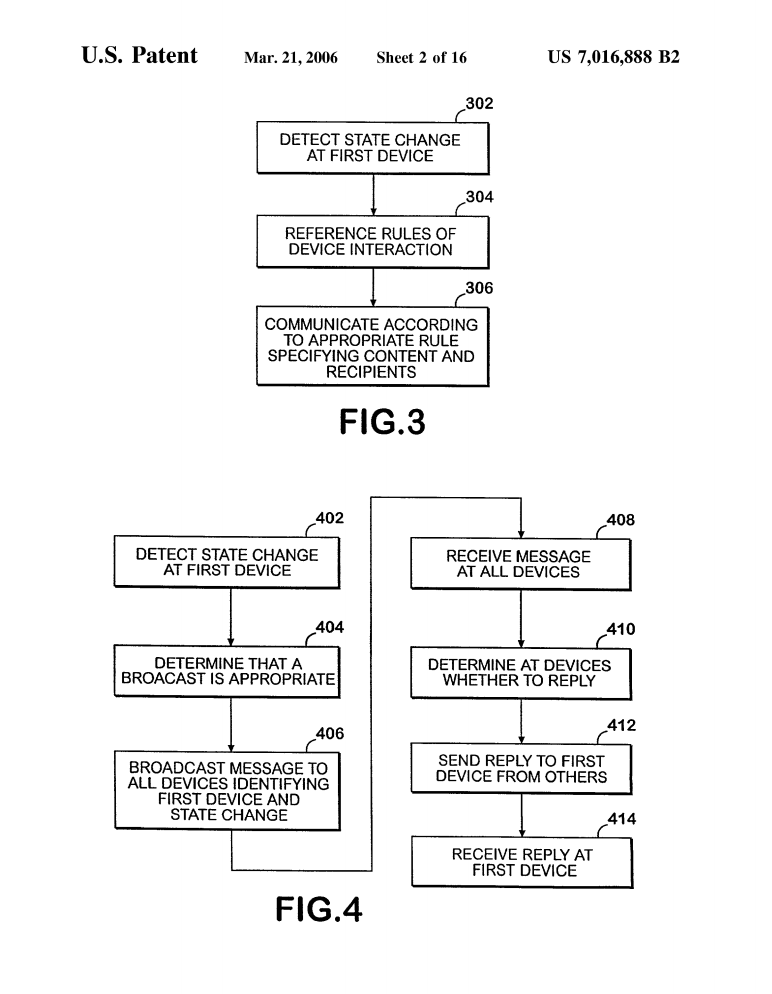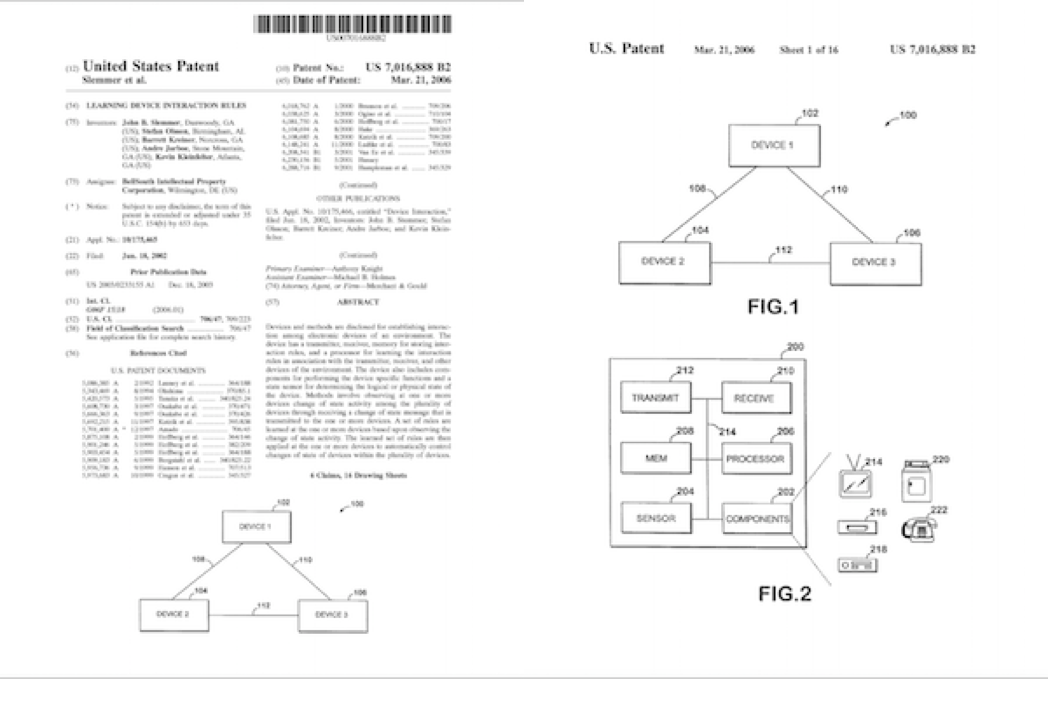Apple Acquired Smart Home Patent with Broad Application
Apple acquired a smart home patent that has significant implications for smart home technology use cases. The patent was originally awarded to Bell South in 2006 after a 2002 filing date. Apple filed for patent ownership last fall and it was awarded earlier today by the U.S. Patent and Trademark Office (USPTO).
Smart Home Related Patent Has Broad Application
It is amusing to read about the VCR examples, but the patent is applied broadly to devices that we would normally consider standard household appliances, and how those devices interact. This includes rules oriented interaction and even changing input responses by learned behavior patterns. The patent states:
“The present invention relates to interaction among electronic devices of an environment. More specifically, the present invention relates to establishing interaction rules for communication and coordination among the electronic devices.
“Electronic devices such as household appliances, audio-video equipment, computers, and telephones operate within a given environment such as the home of a user. However, these devices function independently of one another. The user must initiate actions on the devices to cause the devices to change to a particular state of operation to thereby perform a function desired by the user…
“Therefore, there is a need for automatically establishing interaction rules for the electronic devices within an environment that dictate the communication and coordination of activity among the devices to reduce the burden placed on the user.”
A Network of Devices That Learn Behavior and Adapt
The patent is long and tedious like most things that are worth protecting by legal measures. There are some items worth pointing out from within the legalese.
“Embodiments of the present invention establish interaction rules through observation of user interaction with the devices of the environment. A device may establish its own rules by observing changes of state of itself in relation to changes of state of other devices. Utilizing a defined protocol, the devices may communicate in response to the user interacting with one or more devices to establish rules. Once the rules are learned, the devices can operate in accordance with the interaction rules to automatically change states upon the user initiating an activity at a device within the environment. By automatically establishing the interaction rules, the user is not required to manually program the rules, and the burden on the user is reduced.”

Right. We have been told that virtual assistants, voice or chat-based, will learn our preferences and adjust over time. How do and will they learn? The learn based on either explicit instructions or through observation. The latter approach is covered in the language above.
A Network of Devices Programmed to Execute Tasks
The patent also appears to cover device behavior based on explicit configuration instructions. For example:
“As an example of conditional logic being employed, a rule may specify that a phone ringing means the volume should be decreased for several different devices but only if they are actively playing content. Then when the phone hangs up, the volume should be increased but only for those devices whose volume was decreased by the phone ringing. An example of iterative logic provides that the front porch lights should be turned on at 6 p.m. and off at 12 a.m. everyday.
“An example of serial execution of interaction rules with multiple activities provides that when a light on a computer desk is turned on, the computer is then turned on, and after that the monitor is turned on followed by the computer speakers being turned on. An example of parallel execution of interaction rules with multiple activities provides that when a person is exiting a room, all devices of the room are powered off simultaneously.”
Of course these are just two of 25 listed examples that also include sub-examples and explain how the patent may be applied. It also sounds very similar to configuration options for smart home devices today that enable you to set rules for operation and create “scenes” that orchestrate multiple devices simultaneously.

Apple Acquires Smart Home Patent. So What?
Brian Roemmele, voice commerce pioneer and founder of Mulitplex, unearthed the patent swap and shared it in a Tweet earlier today.
New Apple Patent. In 2002 BellSouth created this #VoiceFirst home automation patent—Apple just acquired it. http://t.co/wNO15K4X9s pic.twitter.com/fOYyWSsTIB
— Brian Roemmele (@BrianRoemmele) July 20, 2017
Brian commented in an interview with Voicebot this afternoon:
Well, this is part of a series of patents and patent acquisitions Apple is making in voice-first plus home automation. This one is quite significant because it reaches into some new use cases.
You will recognize many of the use cases if you do take the time to read though the patent. In fact, many of the features explained exist entirely within smartphones today. You can think of smartphones as multi-appliance devices that can make calls, show videos and control other devices. When one function is initiated, other functions often change behavior. For example, your video stops playing when a phone call comes in and resumes when your call ends. Similarly, an audible sound associated with a notification will reduce the volume on a podcast momentarily and then return to the original level.
These responses result from programmatic rule sets. However, other features such as Apple Maps asking if you would like directions home when you get into your car at 5:00 pm or the expected travel time to reach a certain location at 10:30 am that it predicts you might be heading to based on past actions are examples of learned behavior.
However, these features are separated into discrete appliances in the home. Therefore, learning cannot be from a single device and OS. It by definition requires coordination, and in this case either a learning function or configurable set of rules. That all appears to be included in the patent’s scope.
Where Does This Take Us?
We saw the coordination function with voice input in an earlier patent from Apple. This was about governing input and how devices should or could respond to it. That patent clearly demonstrates that Apple has a sophisticated view of how devices will be used in concert in the future. The BellSouth now Apple patent expresses an even more sophisticated viewpoint. Many of the use case may appear obvious today, but this was innovative thinking in 2002. Innovative enough that Apple wanted the patent to protect its own smart home ambitions in 2017. Rommele added:
The patent was hanging out there and BellSouth had no use for it. My insiders said Apple approached them to acquire this and quite a few other patents. We will see more out soon. Some of this research started at Bell Labs in the 1980s.
Apple understands very well that patents can be defensive insurance or offensive weapons. The company may trail big competitors like Amazon and Google with a narrowly functioning Siri and a HomePod that we can charitably say will be late to market. However, Apple has some intellectual property and other assets that may still set the Cupertino crowd up for long-term success.
The Underwhelming Apple HomePod Launch. Blame it on Siri and Maps.









